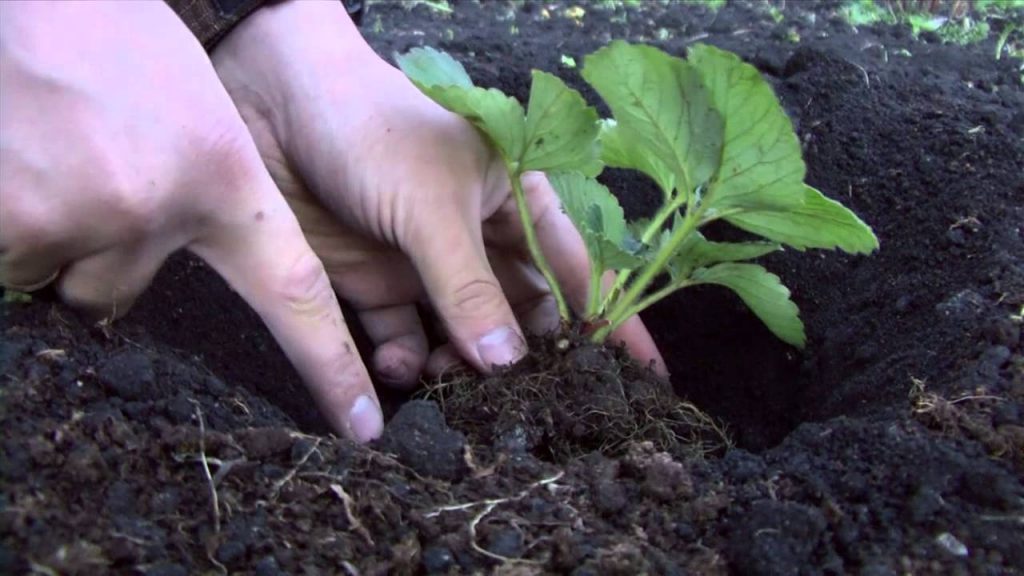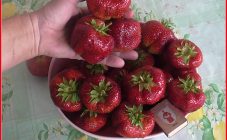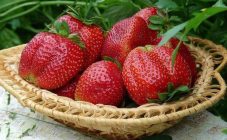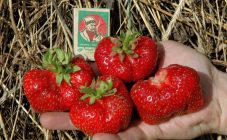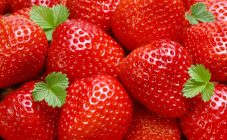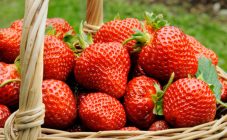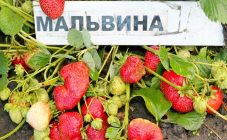Content:
Strawberries are one of the most delicious berries. However, its merits imply that it requires careful maintenance. Usually you have to invest a lot of labor in growing this plant, so varieties that require less effort from a person are in demand. This is the kind of strawberry Bereginya.
History of creation
This type of strawberry owes its existence to a team of breeders under the leadership of Aitzhanova S. D. The work was carried out at the Kokinsky support point of VSTISP.
The strawberry variety Beregini's daughter was bred on the basis of the Solovushka strawberry, the author of which is also Aitzhanova S.D., which is well known for its resistance to low temperatures, as well as to infection with diseases and pests.
Another "parent" of Beregini is the Induka variety. This variety is of Dutch origin and has a high yield.
The Bereginya variety has largely inherited the beneficial qualities of its predecessors and has become a desirable choice not only for summer residents, but also for professionals. The variety was included in the State Register of the Russian Federation in 2012.
When zoning was carried out, this variety was assigned to the Central Federal District. However, it is used not only in this territory, but also in most of the Russian territory. Bereginya's strawberries are grown from the Krasnodar Territory to the Bryansk Region.
Variety characteristics
Description of the strawberry variety Bereginya classifies the plant as non-repairable, which means that it gives a crop only once a year. Both flowering and late ripening. Berries appear in the last decade of June and early July.
The bushes of this variety are of medium height. They have dense foliage and a semi-sprawling shape. Strawberry whiskers are pinkish and medium in length. They usually occur in large numbers.
Strawberry leaves are light green in color, they are shiny and slightly ribbed. Weak pubescence is visible on them. The denticles on the leaves are wide and obtuse. The petioles are pubescent to a greater extent than the leaves. Stipules are green, long and wide.
Peduncles are strongly pubescent. They are of medium thickness, flush with the leaves. The flowers are not twisted, are white and can be of both sexes. The multi-petalled inflorescence has a compact appearance.
The yield of the variety is quite high. At the same time, it is quite possible to collect up to 400 grams of berries from one bush. In the second year, the yield becomes even higher and can reach 600 grams per bush. If we talk about how many berries can be harvested from one hectare, then usually berries can be from 15 to 30 tons.
Berries of the Bereginya variety, when ripe, demonstrate an important feature: during the ripening process, the berries do not shrink. Most strawberries do it differently.
With the onset of the cold season, the Bereginya strawberry demonstrates high frost resistance.
This resistance is due to the fact that the kidneys in this species awaken very slowly and do not have time to open with a sharp change in temperature.
Resistance to cold can be characterized by the value of the coefficient of freezing, which is 1-1.5.
If we talk about resistance to fungal diseases, then Bereginya strawberry in this regard is the most resistant variety.
When growing strawberries, one of the most difficult afflictions can be gray rot. In the southern regions of the country, this disease is much less common. In northern areas, to prevent infestation, it is recommended to increase the distance between plants for better ventilation.
This variety is well resistant to strawberry mites and verticillary wilting.
Strawberry berries are characterized by a blunt-conical shape. The mass of one berry is in the range of 12-14 grams. They have an orange-red color and a shiny surface. The pulp is dense and juicy, there are no pronounced voids inside it.
The berries have a sweet-sour taste, the smell of the variety resembles strawberries.
Agricultural technology of cultivation
It is important to select the most suitable seedlings before planting. It is recommended that they have the following characteristics:
- There should be at least two or three young leaves on seedlings;
- It is desirable that the leaves are shiny and have a green color;
- Rot spots are unacceptable on the root collar;
- If the seedlings are sold in peat pots, then the root must master the entire volume and begin to sprout outward;
- The horn should be at least seven or eight millimeters thick.
Slopes with a slope of 2-3 degrees are best suited for planting.
It is recommended to plant seedlings on the southwest side of the garden plot. It is good if the soil is black earth or dark gray forest.
The place where strawberries grow should not be flooded in spring. When growing, it is desirable that there is good lighting.
You can plant the plant both in spring and autumn. The first option is considered more preferable. Seedlings are planted in April or May. For planting, holes are prepared, which should be spaced from each other at a distance of 20 centimeters. The soil temperature at this time should not be lower than 15 degrees.
In autumn, the time from the end of August to the end of September is used for disembarkation.
Top dressing is done three times per season:
- After planting, complex fertilizers are added;
- Before flowering comes the turn of potash;
- At the end of the season, before the onset of winter, organic feeding is added.
For wintering, mulching is performed. For this, peat, sawdust and needles are used.
Advantages and disadvantages of the variety
This variety has important advantages over other varieties:
- The berry has excellent taste and marketability;
- The berries are of a good size, it is preserved by the end of fruiting;
- High yields;
- A large number of antennae are formed, which guarantees no problems during the reproduction process;
- High resistance to cold weather and sudden temperature changes;
- Good varietal resistance to disease or pest infestation.
As a disadvantage, it can be noted that this variety can be susceptible to gray rot disease, therefore, when growing it, sufficient attention must be paid to combating this disease.



